July 13, 2023
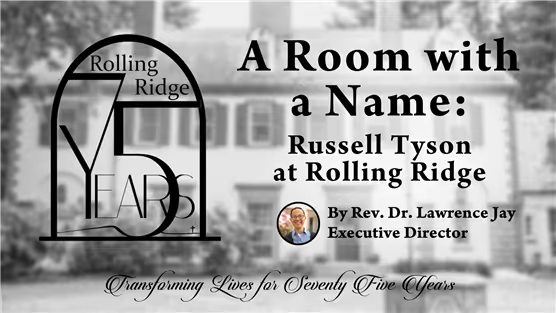
As Rolling Ridge celebrates 75 years of ministry in 2023, we continue a monthly series on the second week of the month to share our history. For most people, Tyson Hall, named for Russell Tyson, has been the room where events have been held for over seven decades. While there is much that we do not know about Tyson, who was the first occupant of the Ridge after Ethan Allen sold the property, we will be forever grateful to his generosity. However, there is more to Tyson than just a room with his name.
By Rev. Dr. Lawrence Jay, Rolling Ridge Executive Director
When you think of an Ethan Allen home, you probably think this:

Or if you are a history buff, you might think of the homestead of Gen. Ethan Allen (1738-1789), the American Revolutionary War patriot, politician, and one of the founders of Vermont:
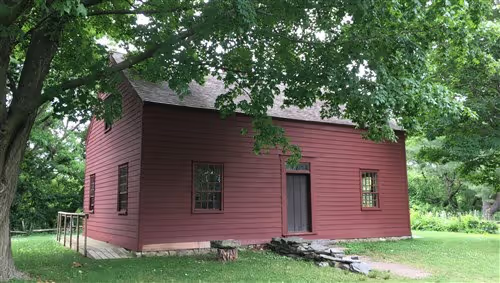
But for those connected to Rolling Ridge, this is the house that Ethan Allen (1862-1932) built:
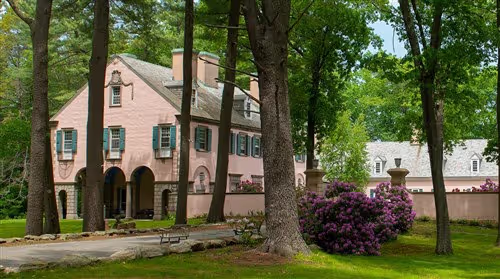
Although Ethen Allen invested decades into the 38 acres of property he purchased as a summer home in 1899, hiring Fletcher Steele to plant the gardens in 1915, and beginning construction of the mansion in 1919, he unfortunately never lived in it. (Click for more on the tragic story of Ethan Allen and the garden designs of Fletcher Steele.) In fact, even when construction of the exterior of the house was completed in 1923, much of the interior of the house was left uncompleted. How ironic that Allen, who had the grounds planted before construction of the house so that he could walk out on finished grounds the day he moved in, never moved in and left an unfinished home. This is where the Rolling Ridge story of Russell Tyson (1867-1963) begins.
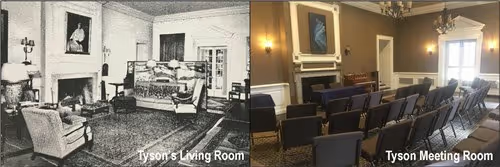
If you’ve ever been to the Ridge, you probably spent time in Tyson Hall, which was the original living room of the mansion and is now the main meeting room of our center. Tyson Hall was named for Russell Tyson, who purchased the property in 1928 and owned it until 1948. Like Ethan Allen, the original owner, Tyson’s connection to the Ridge is shrouded in mystery.
The legends tell us that Russell Tyson, an 1890 Harvard graduate, a real estate broker from Chicago, and a widower, whose wife Sarah Merry Bradley died in 1926, was the first resident of the Ridge. This is partially true, as historical records imply that Tyson was probably just a “summer resident” as census data never shows his primary residency in North Andover, but always in Chicago. His obituaries also never mention him living in Massachusetts outside his college years, although he owned the Ridge for 20 years.
Like Ethan Allen, how Russell Tyson in Chicago originally found Rolling Ridge in North Andover is another story of conjecture. As a successful real estate broker, who went to school in Boston, he probably had connections in the area, but his family history adds another layer of why he purchased a summer property as a widower so far from home. The answer: Massachusetts was home for his family. Both of his parents were born in New Bedford, his brother and sister both have census data linking them to Boston in 1910 and 1920 respectively, and by 1930, his younger sister had a home in Sherborne. With such roots in New England, it makes sense that he would purchase a place in Massachusetts where he could stay when visiting family.
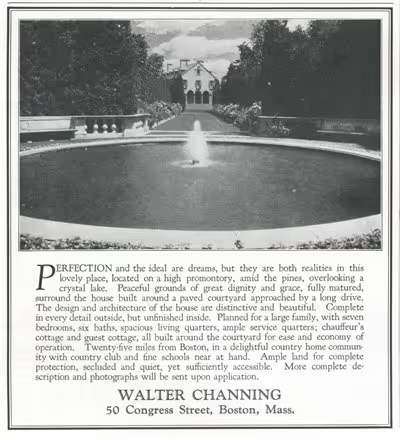
When Tyson purchased the property from the corporation Ethan Allen established to manage the estate, the house was largely unfinished. How “largely unfinished” we will never know, but we do know that 20 years later when Tyson sold the property there were still major portions of the house that were still listed as “unfinished” including the third floor and the rooms that now house the Rolling Ridge offices, and the East Wing bedrooms 14 through Merton.
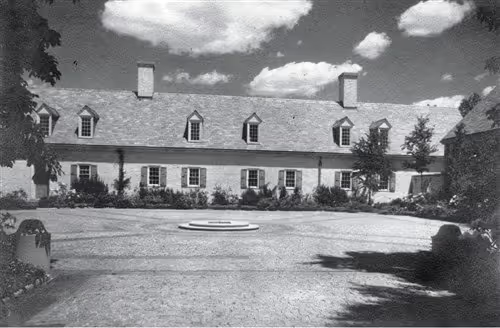
What we do know of the property is that Andrew Hepburn’s architectural design created a Georgian English Manor exterior surrounding a European courtyard providing a familiar but foreign ambience for guests. Today, we see it as Colonial American meets Italian villa. With the Rolling Ridge gardens inspired by Fletcher Steele’s European travels, there is a unique beauty and elegance found on these 38 acres of North Andover’s last great country seats.
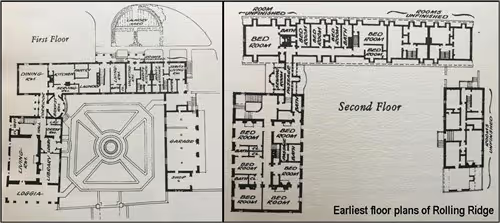
The L-shaped house was designed with early 1900 expectations for family and servants. Think: Downton Abbey with the Main Wing for the family and the East Wing for the servants with a door separating the two worlds. As a summer home, it was expected that the family would travel with servants so there were areas in the East Wing that were designed to house this entourage. Yet, when the family was away, dedicated apartments were in the architectural plans so that year-round staff could be onsite to manage the property. These planned apartments were unfinished when Russell Tyson took possession of the property in 1928, and remained unfinished when the Ridge was sold to the Methodists in 1948. Whether Tyson traveled from Chicago to North Andover with servants on his visits is unclear.
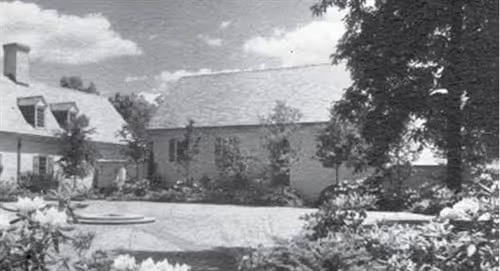
In the architectural design of the house, a garage was built to create the third side of this European courtyard, connected to the mansion by an archway. The garage, also referred to as the Carriage House and the Guest House, had unfinished guest rooms on the second and third floors with these areas remaining unfinished through the decades Tyson owned the property.
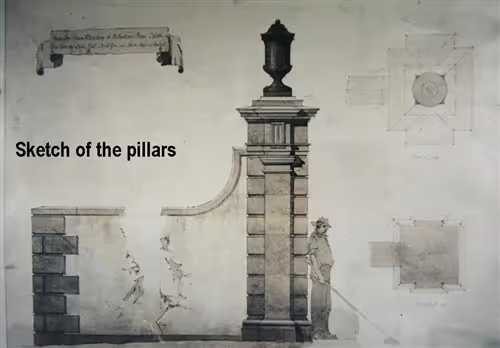
A high stone stucco wall encloses the courtyard with entrance gate pillars surmounted by old lead urns to frame the house in natural unison with the two large (30-inch diameter) pines marking the end of the drive and creating a grand entrance to the house. Like the urns and the pines which are now gone, the original main road to the house is gone and closed to cars.
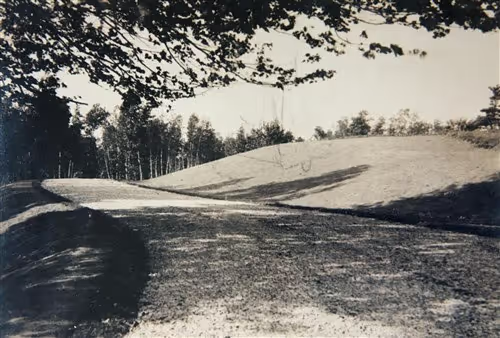
Once upon a time, you would turn off Great Pond Road at the edge of the golf course, follow the graveled road along the rolling ridges and at the last incline, the great pines and the urned pillars would magically emerge, creating a stunning first impression of the courtyard mansion.
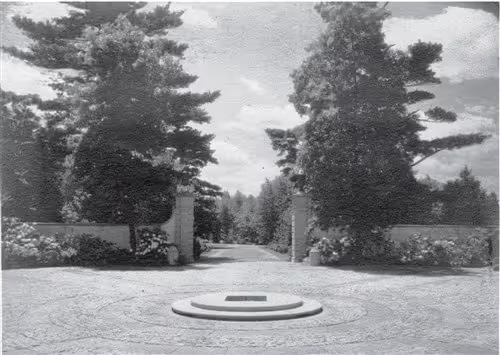
While much of the interior of the house was unfinished when Tyson purchased the property, the exterior and grounds were complete with one notable exception: the fountain in the center of the courtyard. We do not know when it was built but it was after 1930, when pictures of the Rolling Ridge gardens and courtyard were featured in the magazine, House Beautiful, and before the Methodists purchased the property in 1948.
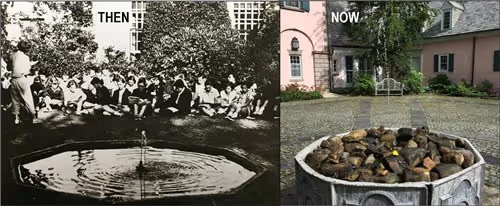
The courtyard fountain was a bubbler fountain with a single stream flowing into a clear pool of water. While the fountain became a planter box with a bell for many decades, in 2018, the Rolling Ridge staff attempted to recreate the original ambience but with a stone-filled pool.
Russell Tyson was 81 when he decided to sell Rolling Ridge in 1948 and consolidate his life back in Chicago. The original asking price was $75,000. In negotiating with the Methodists (whose tale we will tell next month), the story is told that Tyson agreed to take off $25,000 in exchange for naming the living room for him. Thus, for 75 years, Tyson Hall has honored the man who made the Ridge his second home for 20 years.
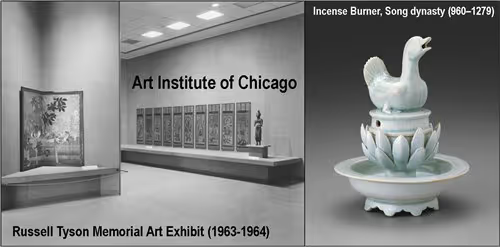
Tyson’s name however is not just connected to the Ridge, but also to the Art Institute of Chicago where he became a trustee in 1925 and eventually became an honorary vice president for life. Born in Shanghai to merchant parents, who traveled the world (his brother was born in Paris), Russell Tyson had a deep love for China and during his lifetime, he became a leading collector of Chinese and Korean art, which included an Incense Burner in the form of a duck from the Song dynasty (960–1279). Upon his passing in 1963 at the age of 96, a memorial exhibit of his art collection was featured at the Art Institute. From the online records, it appears that over 800 pieces were gifted by Russell Tyson and are still housed there. In 1958, one of the Art Institute’s Oriental galleries was named in his honor.
Decades later, this gallery at the Art Institute of Chicago no longer bears his name, but here in North Andover, Tyson Hall continues to honor this “Chicago Art Patron,” as Russell Tyson is identified in his obituary headline in the NY Times. For Rolling Ridge, Russell Tyson is not so much an art patron, but the generous “Chicago real estate broker,” who may have lost $25,000 on the sale of his 20 year investment of Rolling Ridge but instead inherited a lifetime legacy as our benefactor.
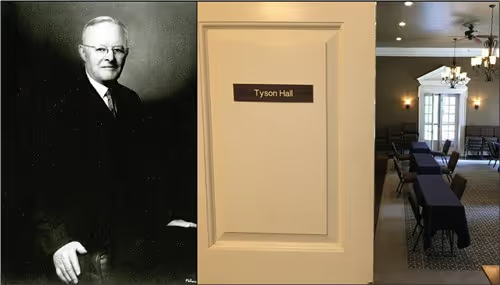
Next time you are at the Ridge meeting in Tyson Hall, we hope that you remember the man to whom the room was named. If it wasn’t for Russell Tyson’s giving spirit (along with persuasive Methodist negotiations), Rolling Ridge would not be celebrating 75 years of ministry. Russell Tyson is more than just a name with a room, but an important legacy for whom we will forever be grateful.
